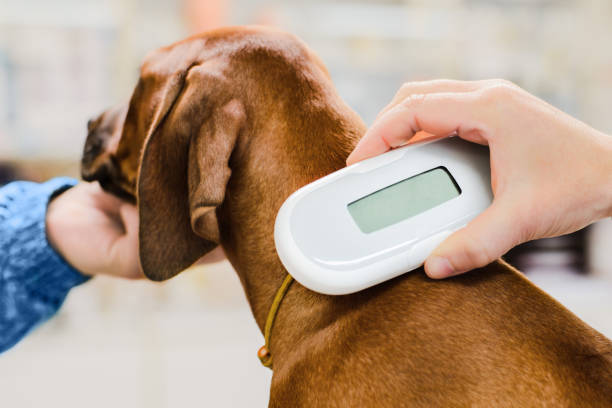
According to statistics, one in three pets become lost at some point, and yours could be one of them. That’s more than enough reason to microchip your pet.
What Is a Microchip?
A microchip is a radio-frequency identification transponder that carries a unique identification number. It’s roughly the size of a grain of rice. When a vet or shelter scans the microchip, it transmits the ID number. There’s no battery, no power required, and no moving parts. The microchip is injected under the loose skin between your dog’s shoulder blades and can be done in your vet’s office. It’s no more invasive than a vaccination.
Why Does My Pet Need a Microchip?
Collars, harnesses, and tags can break off or be removed. Even if tags stay on, they can become hard to read. A microchip will permanently identify your pet when they get lost or if they’re ever stolen. That said, all pets should continue to wear a collar and tags that include their owner’s contact info.
How to Effectively Use a Microchip
The unique identifier in the chip won’t do you any good unless you register it with a national pet recovery database. You’ll want to use a recovery service with access to different microchip databases and technology. For example, a service like Home Again is an AAHA (American Animal Hospital Association) LookUp member, so it can check against hundreds of registries’ databases using the AAHA Universal Pet Microchip Lookup Tool. It is essential to keep your information current and provide your veterinarian with your pet’s chip number. If you must rehome your pet, give the new owner the pet’s chip number and which company it is registered with so they can update the microchip with their contact information. When you register your pet’s microchip, enter all relevant contact information. It’s a good idea to include both landline and cell phone numbers for you and anyone in your household responsible for ownership and a friend or relative who will always know how to reach you if you are separated from your pet by a disaster such as a fire or tornado. You don’t want to miss a call telling you your pet has been found. Remember to keep your contact information updated with the registry, too.
Microchips Are Not GPS Tracking Devices
GPS devices and microchips aren’t substitutes for each other. They’re actually complementary, and each is useful for locating a lost pet in different ways. A GPS may tell you where your pet is, but it can’t provide your contact information to those nearby that would help return them home. It also requires batteries and can be lost, like a collar or tags.
Microchips are permanent because they’re inserted into an animal’s skin. While they can’t guide you to your pet’s location, they provide a way for you to be contacted by almost any veterinarian or shelter if your pet is brought in.
Microchipping your pet is simple; it’s inexpensive and has minimal risks. So, please take this opportunity to have your pet microchipped because the thought of losing them forever is too much to bear.
Microchipping is offered for a nominal fee at the monthly TCAP clinic. Consider getting your pet microchipped.
